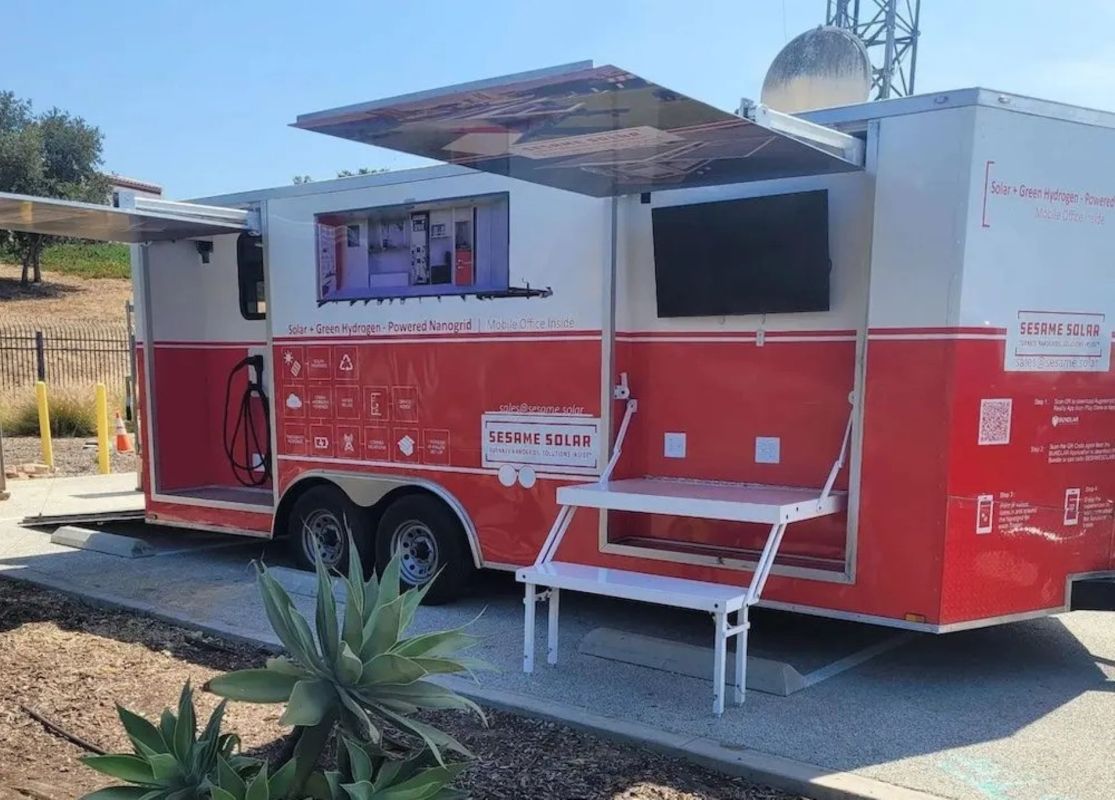Newly developed mobile solar stations, dubbed "Nanogrids," may be the key to bringing power to emergency crews and displaced residents when natural disasters occur.
What is a Nanogrid?
Sesame Solar, a renewable energy startup, is providing what looks like food trucks lined with solar panels to provide solar energy to areas most in need of it, mainly those struck by climate and weather disasters.
According to the company, the panels are responsible for charging the batteries onboard, and it claims that a single so-called Nanogrid can generate between three and 20 kilowatts. That's enough to provide power for approximately four to six houses, as reported by CNET.
Alongside solar power, the Nanogrids are outfitted with a hydrogen fuel cell, which converts water into hydrogen — and that, in turn, can be stored in tanks and utilized for recharging the batteries when their charge level falls below 35%.
Moreover, the Nanogrids feature an onboard water filtration system capable of supplying up to 500 liters of drinkable water daily. Tripling down on their value in the aftermath of a disaster, they also boast a 5G mesh network, enabling individuals affected or displaced to access the internet.
Why is renewable energy important?
As human activities warm the planet, droughts, floods, and powerful storms are becoming more common. Between the 1970s and 2010s, the costs of weather and climate-related disasters went from an average of about $49 million to $383 million per day globally.
"The number of weather, climate and water extremes are increasing and will become more frequent and severe in many parts of the world as a result of climate change," said World Meteorological Organization Secretary-General Prof Petteri Taalas, the BBC reported in 2021.
How Nanogrids help the planet
Since the production of electricity produces more harmful planet-warming gases than any other sector, it's important for renewable energy to start replacing the traditional production of energy to power our industries and homes. Nanogrids do just that, although they are specifically designed for disaster situations.
Lauren Flanagan, the co-founder and CEO of Sesame, claimed the Nanogrid is the planet's first mobile system that operates solely on 100% renewable energy.
"No reliance on fossil fuels, diesel, or natural gas is necessary," Flanagan said, according to CNET. "All that is required is water and sunlight."
Tailored to individual customer requirements, Sesame offers customizable Nanogrids that can serve various purposes, like functioning as medical units or communications hubs.
The cost of a single Nanogrid ranges from $100,000 to $375,000.
Join our free newsletter for weekly updates on the coolest innovations improving our lives and saving our planet.









